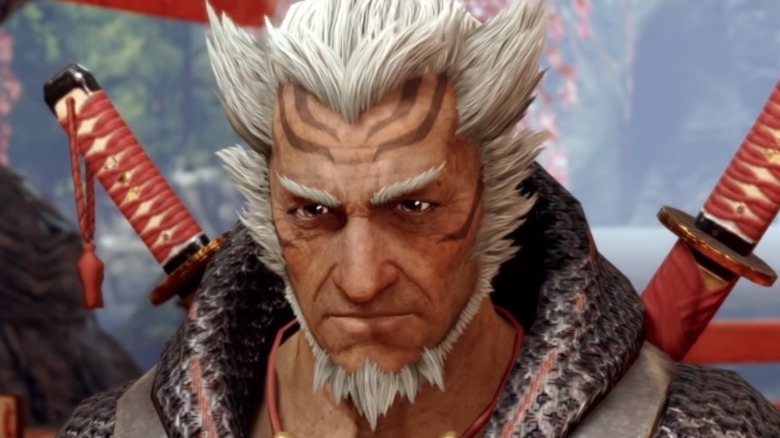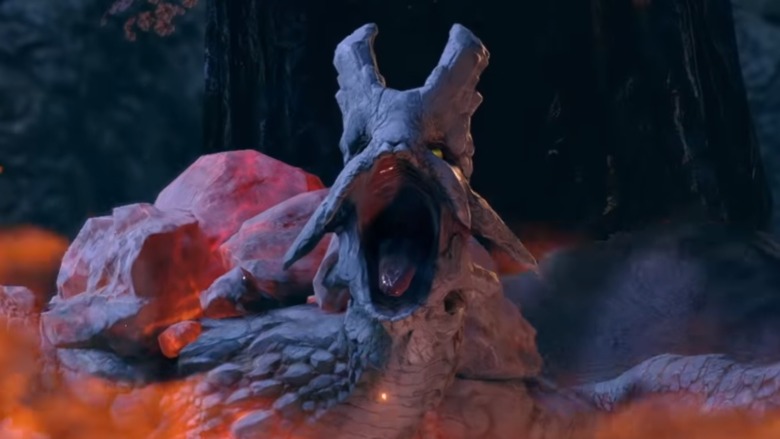Things Only Adults Notice In Monster Hunter Rise
Ever since its 2004 debut, the "Monster Hunter" series has grown to become Capcom's second-biggest franchise, with more sales than iconic brands like "Street Fighter" and "Mega Man." The newest entry in the series, "Monster Hunter Rise," capitalizes on that popularity and has delivered another critically acclaimed entry into the series that provides the same primary gameplay loop while introducing new mechanics like Wirebug movement and wyvern riding.
As Capcom's biggest franchise that isn't shipped with a Mature rating from the ESRB, as its all-time best-selling series "Resident Evil" typically is, the company has seemingly made an effort to give Monster Hunter games as broad an appeal as possible. While there is inherent violence in the monster fighting that makes up the game's most straightforward content, the world, and its inhabitants, are generally brightly rendered and family-friendly.
However, just because Capcom designed "Monster Hunter Rise" to be played by gamers of all ages doesn't necessarily mean that it is for children. The game incorporates elements of folklore and has some interesting situations that will probably go right over younger players' heads, which may be for the best. Here are things that only adults notice in "Monster Hunter Rise."
Fukashigi the Informant is naked and lives in your walls
In general, the cat-like Palico creatures that players encounter in "Monster Hunter Rise" are helpful, well-mannered, and politely clothed. However, there is one notable exception, and many players might not realize just how off-putting one of the most suspicious Palicos in the game really is.
Towards the back of the player's house in the main room, there is a large tapestry. If players approach that tapestry, they will have the option to talk to it – or rather, to talk to Fukashigi the Informant, the naked cat hiding in their walls. While Fukashigi is an excellent source of information, providing world lore related to the player's current urgent quests, his style of dress (which is nothing at all) and general mode of living are pretty suspect.
Of course, all of this begs the question of just what Palico modesty means in the "Monster Hunter" series, and fans on Reddit have debated whether their clothing has more value as armor or a fashion statement for years. The player's room also has a Palico housekeeper, who is fully clothed and apparently allowed to live in the open instead of hiding in the walls. Either way, Fukashigi has clearly made some odd life choices.
Monster Hunter Rise is an extended homage to Japanese folklore
While the "Monster Hunter" series' aesthetics and mythology have always been rooted in the Japanese culture, gamers familiar with traditional aspects of Japanese folklore may notice a more direct influence on "Monster Hunter Rise." In an interview with IGN, game director Yasunori Ichinose went through various in-game creatures to show how yokai and "Hyakki Yako," two essential pillars of mythic Japanese storytelling, helped the game's art team develop new creatures.
For instance, the amphibious, shuffling Tetranadon was based on the kappa, a common yokai known for devouring humans who wander near their riverside homes. Ichinose explains that while the Tetranadon incorporates elements of both kappa and real-world animals, the creature's origin and even attack patterns are based on aspects of the creature's mythical inspiration.
The game even used beasts that fans of Japanese folklore may be familiar with, to a certain extent. The Goss Harag is based on the Namahage, which are demonic yokai who are said to descend from the mountains on New Years' to frighten misbehaved children with their terrifying appearance and scarily long knives. Today, in the Akita Prefecture, residents dress up as Namahage as a part of a traditional New Years' celebration.



